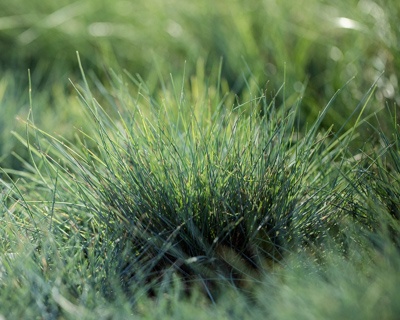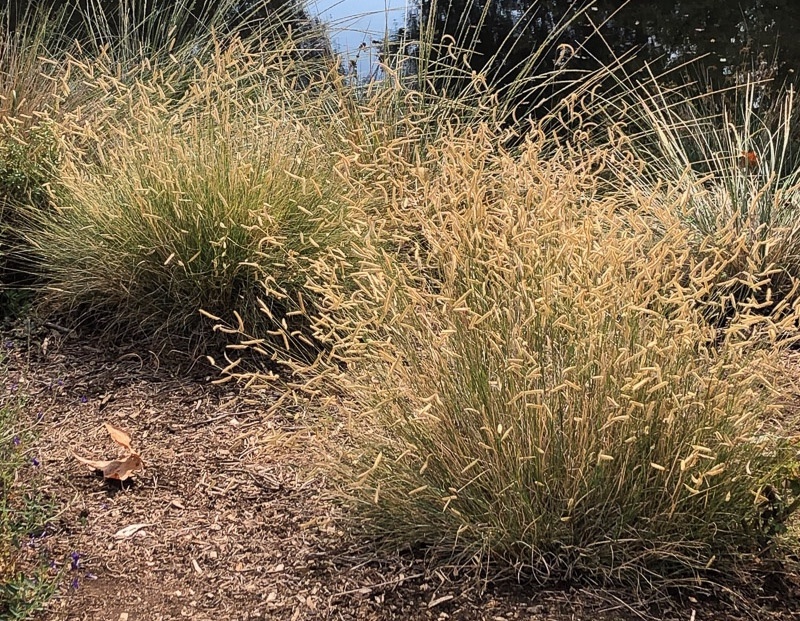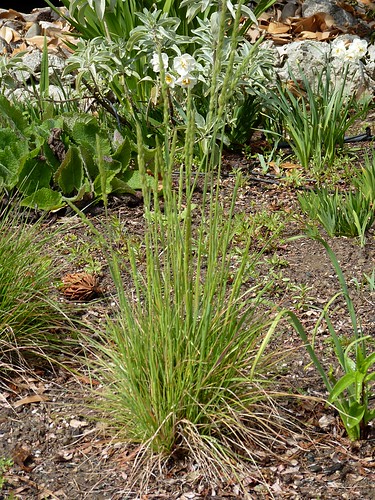
Native grasses for your low-water landscape
The fragrance, beauty, and value to pollinators of flowering native plants like California fuchsia or Cleveland sage make them an obvious choice for gardeners in our region. But have you thought about adding native grass to your landscape? The Central Valley is home to a wide variety of native, hardy, low-maintenance, drought-tolerant perennial bunchgrasses that make a great addition to home gardens. Furthermore, the seed heads of these grasses are food for native songbirds, the blades of some grass species are used in nest construction by both birds and native bees, and the larvae of many native butterflies and skippers preferentially consume them.
Pick the grass that fits your space
The upcoming April 29, 2023 Friends of the UC Davis Arboretum and Public Garden plant sale features multiple species of native grasses, as well as sedges and rushes — two other great choices for Central Valley landscapes. Some are winter-dormant, turning brown only to green up when the weather warms in spring, while others are summer-dormant, greening up with the arrival of cool weather and fall rains. Many look attractive even with dry foliage, while others can be cut back during their dormant phase. Read on for some advice about selecting a species that will suit your garden.
Browse our nursery inventory and consider attending one of our upcoming plant sales.
Recommended California native grasses

For a large, structural plant that looks great year round and can tolerate full sun, look no further than the widely planted Muhlenbergia rigens or deergrass. This grass reaches 3-4’ tall and wide, and requires cutting back only once every few years to stay looking nice. It is great planted alone or in groups toward the back of a planting bed or along a border!

For a versatile option with beautiful, blue-green foliage, consider one of the fescues (Festuca idahoensis, Festuca californica ‘Serpentine Blue’, Festuca ‘Siskiyou Blue’). These attractive plants form a 1-2’ tall mound that looks good as a standalone planting, lining a path, or as a groundcover.

For an eye-catching flower, look to Boutelouas. Bouteloua gracilis is a very compact bunchgrass with unusual “eyelash-like" flowers. Consider planting it in full sun among asters and gumplants for a beautiful, drought-tolerant summer and autumn display. Boutleoua curtipendula, another summer flowerer with slightly more height, reaches 2-3 feet tall. Try it as a backdrop to spring wildflowers like poppies and lupines.

Have a spot that gets some shade? Consider Festuca rubra ‘Molate’, a 1-foot tall, clumping, deep green grass that makes a popular lawn replacement and enjoys part shade here in the Central Valley, along with some supplemental summer water. Another slightly taller option is prairie junegrass (Koeleria macrantha), a cool-season grass with beautiful, showy seedheads in early summer.
